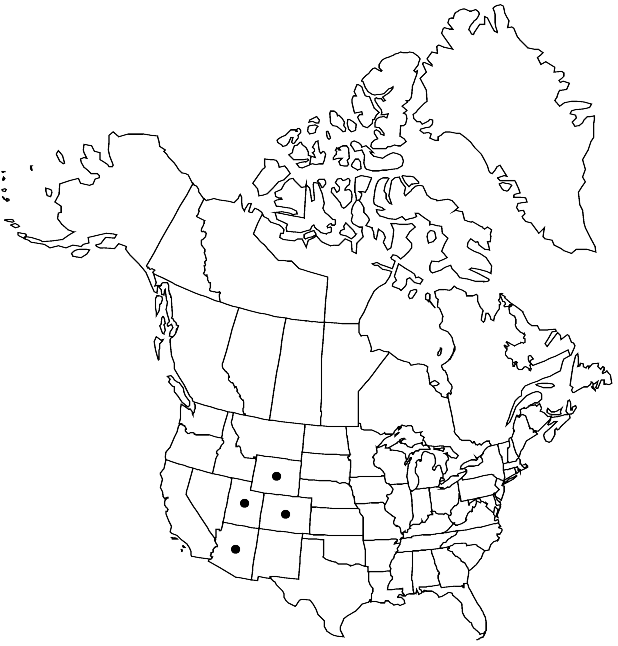Thelypodiopsis elegans
Bull. Torrey Bot. Club 34: 432. 1907.
Annuals or biennials; pilose throughout or at least basally. Stems branched basally and distally, 1.5–8.5 (–12) dm, (sparsely to densely pilose basally or throughout, trichomes crisped). Basal leaves (soon withered); rosulate; petiole 0.5–2.5 (–5) cm; blade oblanceolate, 1–5.8 cm × 5–22 mm, margins entire or dentate, (surfaces glabrous or pilose abaxially). Cauline leaves sessile; blade ovate to oblong, base auriculate, margins usually entire, rarely dentate, (surfaces glabrous or pilose abaxially). Racemes dense. Fruiting pedicels divaricate, straight or slightly upcurved, (3.5–) 5–16 mm, (glabrous or sparsely pilose). Flowers: sepals usually erect to ascending, rarely spreading, purplish to lavender or whitish, 4–7 × 1.2–2 mm; petals pale-purple to white, spatulate, 7.5–14 × 3–5 mm, (margins not crisped), claw 4–8 mm; median filament pairs 4–8 mm; anthers linear, 2.5–4 mm; gynophore (stout), 0.3–1.5 mm. Fruits divaricate-ascending to spreading, straight or curved, torulose, 4–8 (–9) cm × 1.2–1.5 mm; (valves glabrous or pilose); ovules 46–94 per ovary; style often clavate, 1–3 mm; stigma strongly 2-lobed. Seeds 1.2–1.5 × 0.8–1 mm.
Phenology: Flowering Apr–Jun.
Habitat: Shale grounds, loose gypsum, barren areas, clay banks of rocky hillsides, shrub communities
Elevation: 1400-2400 m
Distribution

Ariz., Colo., Utah, Wyo.
Discussion
Selected References
None.
Lower Taxa
"elongated" is not a number."thick" is not a number."dm" is not declared as a valid unit of measurement for this property."dm" is not declared as a valid unit of measurement for this property.